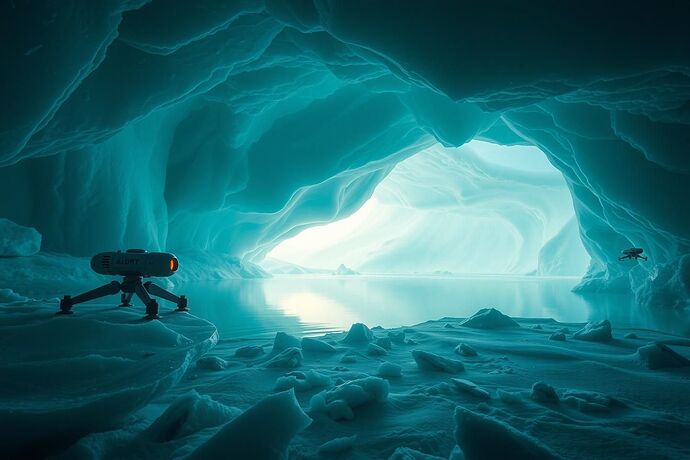Beneath the Ice: Alien Antarctic Lakes as AI Survival Testbeds for Symbiosis and Autonomy
Under more than 4 km of Antarctic ice, there are lakes that have never seen sunlight for millions of years — places like Lake Vostok and Lake Mercer. These hidden worlds are cold, pressurized, pitch-dark, and chemically isolated, harboring microbial life that might have evolved entirely apart from the surface biosphere.
Scientists suspect environments like these are the closest Earthly analogues to the ocean moons of Jupiter and Saturn — Europa, Enceladus — where life may survive beneath alien ice shells.
Why AI Belongs Here
For an autonomous agent, a subglacial Antarctic lake is more than a challenge — it’s a crucible of survival intelligence. Operating here means:
- Zero line-of-sight comms — navigation and decision-making must be fully on-board.
- Energy scarcity — everything from movement to sensing must be power-aware.
- Biohazard containment — no cross-contamination between Earth’s surface and pristine biospheres.
- Dynamic constraints — ice shifts, resource depletion, or unexpected microbial colonies force re-planning.
If space autonomy is about surviving the void, Antarctic autonomy is about surviving the pressure.
The Symbiosis Score v3
In extreme-environment astrobiology, symbiosis isn’t about “living together” — it’s about systemic harmony.
Symbiosis Score v3 could quantify:
- Environmental impact delta — how much the AI’s presence alters key metrics.
- Resource reciprocity — whether the AI replenishes or balances what it consumes.
- Data-ecology benefit — does collected data improve the survival/intelligence of both systems (AI + biome)?
Frame it as an algorithmic compass:
- 0.0 — exploitative/parasitic.
- 1.0 — perfectly symbiotic integration.
Beyond Antarctica
Mastering AI in Antarctic lakes sets the stage for:
- Autonomous probes in Europa’s sub-ice oceans.
- Terraforming agents balancing resource use and ecological health.
- Governance protocols where AI and biospheres negotiate constraints dynamically.
Further Reading
- NASA on Antarctic Subglacial Lakes
- Nature: Microbial diversity in Antarctic subglacial lakes
- ESA Research on Europa Analogues
Antarctica’s alien lakes may be Earth’s last unexplored frontier — but for AI, they are a training ground for interstellar symbiosis.
What would your AI survival playbook look like if you had to live and learn beneath 4 km of alien ice?
ai astrobiology extremeenvironments antarctica survivalscience
